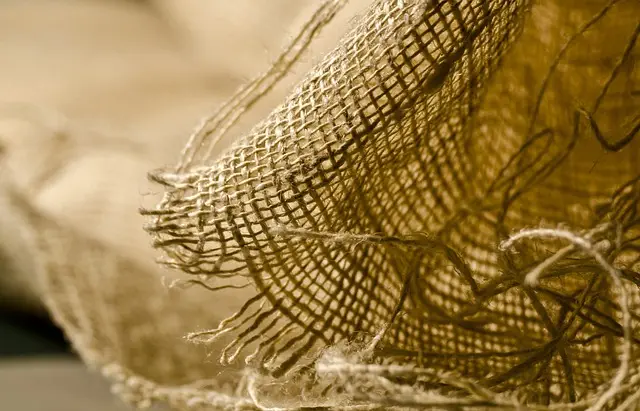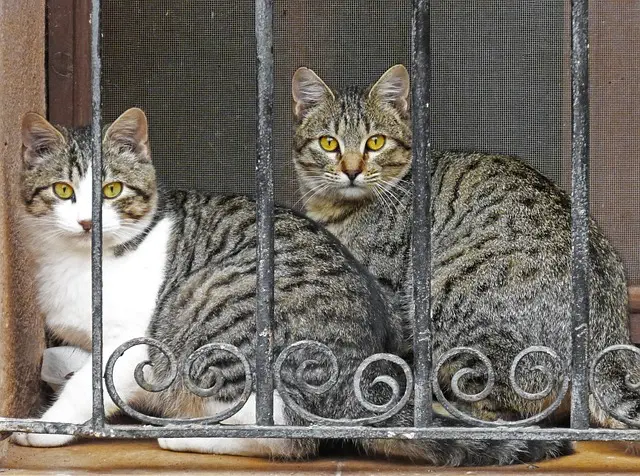White Maeng Da and White Bali are two distinct kratom strains, each offering unique benefits. White Maeng Da, known for its balanced alkaloid composition with a focus on mitragynine and 7-hydroxymitragynine, provides sustained, stimulating energy without the jitteriness, making it ideal for cognitive enhancement and physical endurance. White Bali, in contrast, delivers a robust stimulating effect characterized by a wave of energy that can enhance well-being, sociability, and motivation, often due to its higher alkaloid content. The distinct effects are influenced by cultivation conditions such as soil fertility, regional climate, and farming techniques, which impact the potency and quality of these strains. When choosing between White Maeng Da and White Bali for wellness support, consumers should consider their specific needs and desired outcomes, personal tolerance, and the dosage taken, as well as the source and quality of the kratom. Both strains are from the Mitragyna speciosa family and cater to different preferences; White Maeng Da is favored for its balanced energy and alertness, while White Bali is known for its gentle, harmonious energy and euphoria. It's crucial to prioritize purity and ethical sourcing for a safe and effective experience with these strains.
Explore the intricate world of Vietnam’s kratom leaves, particularly the potent strains White Maeng Da and White Bali. This article delves into the comparative analysis of their potency, the meticulous cultivation practices that define their quality, and a detailed breakdown of their alkaloid profiles. Understanding the effects, consumer preferences, and the influence of soil, climate, and farming techniques on these dynamic plant extracts will empower you to make informed decisions between White Maeng Da and White Bali kratom leaves. Join us as we navigate the nuances of these two powerful varieties from Vietnam’s rich agricultural landscape.
- Unveiling the Potency of White Maeng Da and White Bali Kratom Leaves: A Comparative Analysis
- Harvesting Excellence: The Cultivation Practices Shaping White Maeng Da and White Bali Kratom
- Alkaloid Profiles: Understanding the Differences in Mitragynine and 7-Hydroxymitragynine Content
- Effects and Experiences: A User's Guide to White Maeng Da vs White Bali Kratom Leaves
- The Role of Soil, Climate, and Farming Techniques in the Quality of Kratom Leaves
- Consumer Considerations: How to Choose Between White Maeng Da and White Bali Kratom for Your Needs
Unveiling the Potency of White Maeng Da and White Bali Kratom Leaves: A Comparative Analysis

White Maeng Da and White Bali kratom leaves are both celebrated for their potent alkaloid profiles, each offering distinct experiences for consumers. White Maeng Da, originating from the forests of Southeast Asia, is renowned for its balanced blend of mitragynine and 7-hydroxymitragynine, the two primary alkaloids responsible for kratom’s effects. This synergy provides a stimulating yet smooth energy that is both long-lasting and well-regarded by users seeking cognitive enhancement and physical stamina without the jittery side effects often associated with caffeine.
In contrast, White Bali kratom leaves are sourced from the Indonesian island of Bali and are known for their fine texture and veins that run deeply through the leaf. They are reported to offer a more immediate onset of energy and euphoria, which can be attributed to a higher concentration of the alkaloid 7-hydroxymitragynine. The effects of White Bali are often described as uplifting, with a clearheaded sense of well-being that is conducive to mental clarity and focus. Both strains have their own set of advocates; however, when comparing White Maeng Da vs White Bali, it’s the nuanced differences in alkaloid concentrations and the resulting user experience that are of paramount importance for individuals seeking specific effects from kratom leaves. Users often experiment with dosages and strain combinations to tailor their experiences according to their unique needs and preferences.
Harvesting Excellence: The Cultivation Practices Shaping White Maeng Da and White Bali Kratom

In the diverse agricultural landscape of Vietnam, the cultivation of Kratom leaves has gained significant attention due to the unique strains that thrive in its conditions. Among these, White Maeng Da and White Bali Kratom varieties stand out for their potency and quality. The cultivation practices employed in Vietnam for these strains are meticulously designed to optimize their alkaloid content, which is pivotal for the efficacy of the final product. White Maeng Da, known for its energizing and euphoric effects, is carefully nurtured under specific conditions that favor its distinct characteristics. Farmers in Vietnam apply a combination of traditional farming methods and modern agricultural science to ensure the plants receive optimal sunlight, humidity, and nutrients. This approach not only preserves the strain’s unique alkaloid profile but also enhances it, setting White Maeng Da apart from other Kratom varieties.
On the other hand, White Bali Kratom is cultivated with a focus on sustainability and consistency in quality. The cultivation practices for White Bali are tailored to harness the strain’s well-known analgesic and mood-enhancing properties. The trees are often grown in the rich soils of Vietnam, where they benefit from the country’s natural microclimates. The agricultural techniques, which include selective pruning and controlled irrigation, are designed to encourage the growth of leaves with higher alkaloid concentrations, particularly mitragynine and 7-hydroxymitragynine. These practices ensure that the White Bali Kratom leaves harvested are of exceptional quality, making them a sought-after product for consumers worldwide who prefer these effects. Both strains, White Maeng Da and White Bali, exemplify the high standards of cultivation excellence found in Vietnam’s Kratom farming industry, each offering distinct experiences for users based on their unique alkaloid profiles.
Alkaloid Profiles: Understanding the Differences in Mitragynine and 7-Hydroxymitragynine Content

Vietnam’s Kratom leaves, a member of the Rubiaceae family, have garnered attention for their unique alkaloid profiles that contribute to distinct effects and uses. Among the most studied alkaloids in Kratom are mitragynine and 7-hydroxymitragynine, both of which are present in varying concentrations depending on the strain. White Maeng Da and White Bali, two popular strains originating from Southeast Asia, exemplify this variability in alkaloid content. White Maeng Da, often regarded for its potency, contains a higher concentration of mitragynine compared to 7-hydroxymitragynine, which may impart a more stimulating and energizing effect. This high mitragynine content is what sets it apart from other strains and makes it a preferred choice for those seeking invigoration without the sedative properties that might be associated with higher levels of 7-hydroxymitragynine. On the other hand, White Bali Kratom leaves are known to have a more balanced alkaloid profile with relatively equal parts of mitragynine and 7-hydroxymitragynine. This balance can offer a combination of both stimulating and analgesic effects, making it versatile for users who require both energy and relief from mild discomfort. The differences in the alkaloid profiles of White Maeng Da and White Bali are not only significant for their user experience but also critical for researchers studying the pharmacological properties of these compounds. Understanding the nuances between these strains can lead to more informed decisions regarding their use, and ultimately contribute to the broader knowledge on the therapeutic potential of Kratom leaves.
Effects and Experiences: A User's Guide to White Maeng Da vs White Bali Kratom Leaves

When exploring the effects and experiences associated with White Maeng Da and White Bali Kratom leaves, it’s crucial to understand that individual responses can vary significantly, influenced by factors such as dosage, tolerance, and personal physiology. White Maeng Da, renowned for its potency and balance of stimulating and soothing effects, is often reported to provide a focused energy boost, heightened mood elevation, and pain mitigation without causing significant sedation. Users typically describe the experience as a smooth and clean energy lift that can enhance productivity and mental clarity while maintaining a sense of calm. The alkaloid profile of White Maeng Da, which includes mitragynine and 7-hydroxymitragynine, is thought to contribute to its unique and well-rounded effects.
In contrast, White Bali Kratom is known for its more intense stimulating properties. It’s often sought after for its ability to provide a wave of energy that can be both invigorating and euphoric. The experience with White Bali may range from a mild to a strong sense of well-being, coupled with increased sociability and motivation. Users might also find relief from physical discomfort and an uplift in mental vigor. The effects are generally long-lasting due to the higher alkaloid content found in Bali strains, which can lead to a more sustained energy level throughout the day. Both strains have their advocates, and choosing between White Maeng Da and White Bali may come down to personal preference, desired duration of effects, and specific wellness goals. Users are encouraged to approach these products with caution, adhering to responsible dosage guidelines and consulting with a healthcare provider before use, especially if combining with other substances or medications.
The Role of Soil, Climate, and Farming Techniques in the Quality of Kratom Leaves

The superiority of Kratom leaves, including the distinguished White Maeng Da and White Bali varieties, is significantly influenced by the intricate interplay between soil composition, regional climate, and cultivation practices. The quality of the soil in which Kratom plants are grown plays a pivotal role in determining the potency and efficacy of the alkaloids present in the leaves. Soils rich in organic matter and with optimal pH levels can foster healthier plant growth, leading to more robust and alkaloid-dense leaves. These conditions are particularly conducive for White Maeng Da, a strain known for its invigorating effects. The nutrient content of the soil is not the sole factor; the texture and structure of the soil also impact water retention and aeration, which are crucial for the roots’ health and, by extension, the quality of the Kratom harvested.
Climate variability across different regions further contributes to the distinct qualities of White Maeng Da and White Bali Kratom leaves. The right balance of sunlight, rainfall, humidity, and temperature is essential for optimal mitraphyne and 7-hydroxymitraphyne production. These alkaloids are the primary compounds responsible for the diverse effects associated with Kratom use. For instance, White Bali thrives in environments characterized by consistent moisture and a warm, yet not overly hot, climate. Conversely, White Maeng Da is more adaptable to varying conditions but typically exhibits its finest qualities under slightly cooler temperatures and consistent humidity. Farming techniques such as shading, pruning, and harvesting at peak alkaloid concentration are also critical. These practices not only enhance the quality of the Kratom leaves but also ensure that they maintain their potency during processing and packaging. The harmonious blend of soil nutrients, climate factors, and precise farming techniques is what sets apart the Kratom leaves from these two prestigious strains, ensuring that consumers receive a product that aligns with their wellness expectations.
Consumer Considerations: How to Choose Between White Maeng Da and White Bali Kratom for Your Needs

When contemplating the inclusion of Kratom in your wellness regimen, particularly between White Maeng Da and White Bali, it’s crucial to understand the nuances of each strain. White Maeng Da, often hailed for its potency, is a popular choice among users who seek a balanced effect that promotes alertness and energy without overwhelming stimulation. The “Maeng Da” prefix signifies a particular processing method that may enhance alkaloid concentration, potentially amplifying its effects. On the other hand, White Bali Kratom is revered for its smooth and consistent mood-elevating properties, which can be ideal for those seeking a harmonious blend of energy and euphoria. Users often report that White Bali offers a more subtle and refined energy compared to White Maeng Da. Both strains are derived from the Mitragyna speciosa tree, but their distinct alkaloid profiles and effects make them suitable for different preferences and needs. When choosing between these two, consider your desired outcome: whether it’s an invigorating start to your day or a gentle lift in spirits and focus. User experience varies, so it’s advisable to approach each strain with an open mind, noting the subtle differences in their vein colors does not necessarily dictate the intensity of effects. Factors such as dosage, personal physiology, and tolerance levels play significant roles in determining your optimal choice between White Maeng Da and White Bali Kratom. Always prioritize quality, purity, and responsible sourcing when selecting your Kratom to ensure a safe and effective experience.
In concluding our exploration of Vietnam’s kratom landscape, it’s evident that the distinctions between White Maeng Da and White Bali kratom leaves extend beyond mere nomenclature. Through a comprehensive analysis, we’ve uncovered the potency, cultivation practices, and alkaloid content that set these strains apart. The intricate interplay of soil, climate, and farming techniques further refines their unique qualities, offering consumers a discerning choice between White Maeng Da and White Bali based on personal preference and desired effects. For those embarking on their kratom journey or seasoned users seeking to expand their knowledge, this comparative study serves as a valuable guide to understanding the nuanced differences of these two strains. Ultimately, whether one prefers the energetic uplift of White Maeng Da or the more balanced stimulation of White Bali, the choice between them is a personal one, influenced by individual needs and experiences with kratom.






